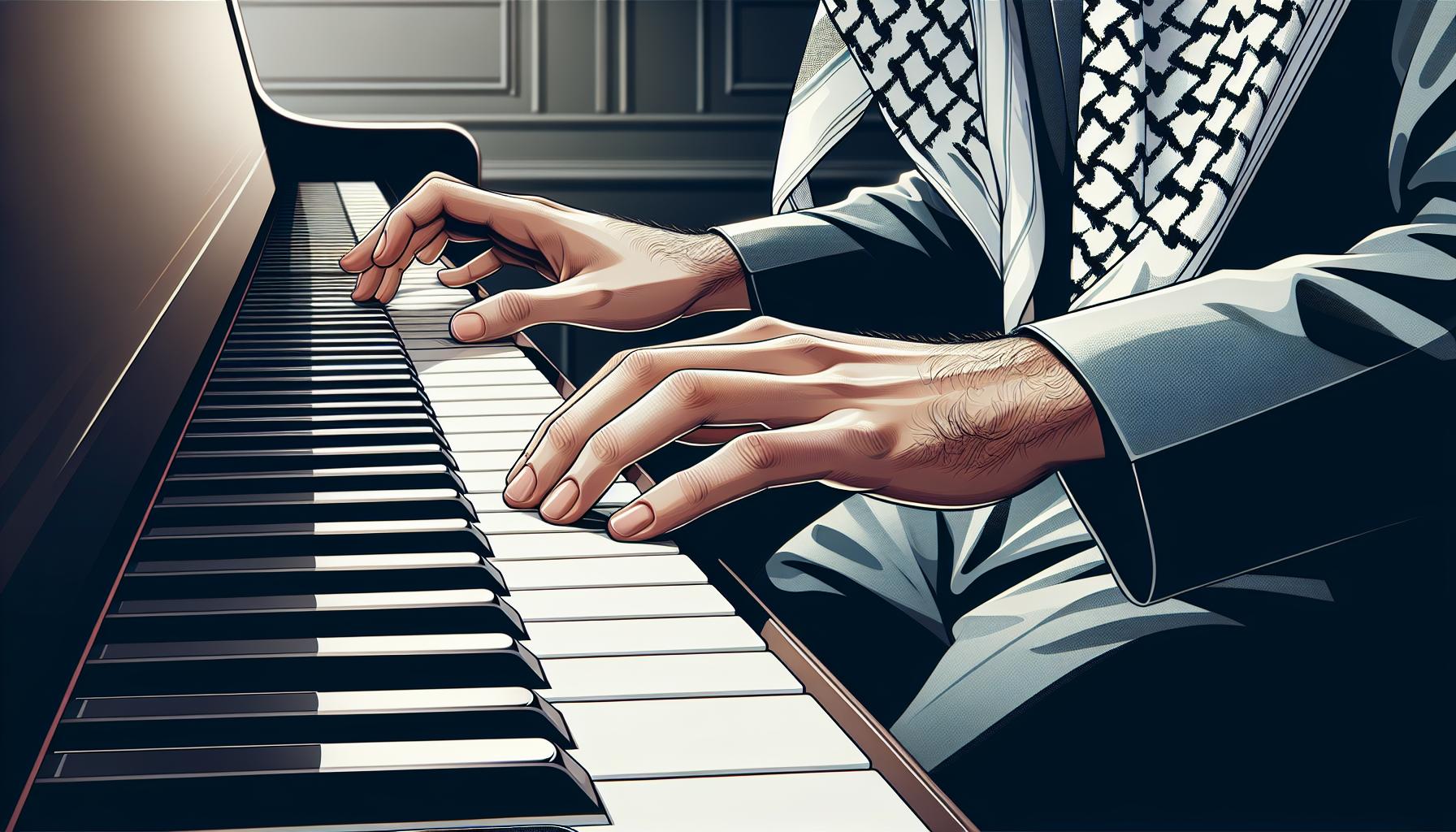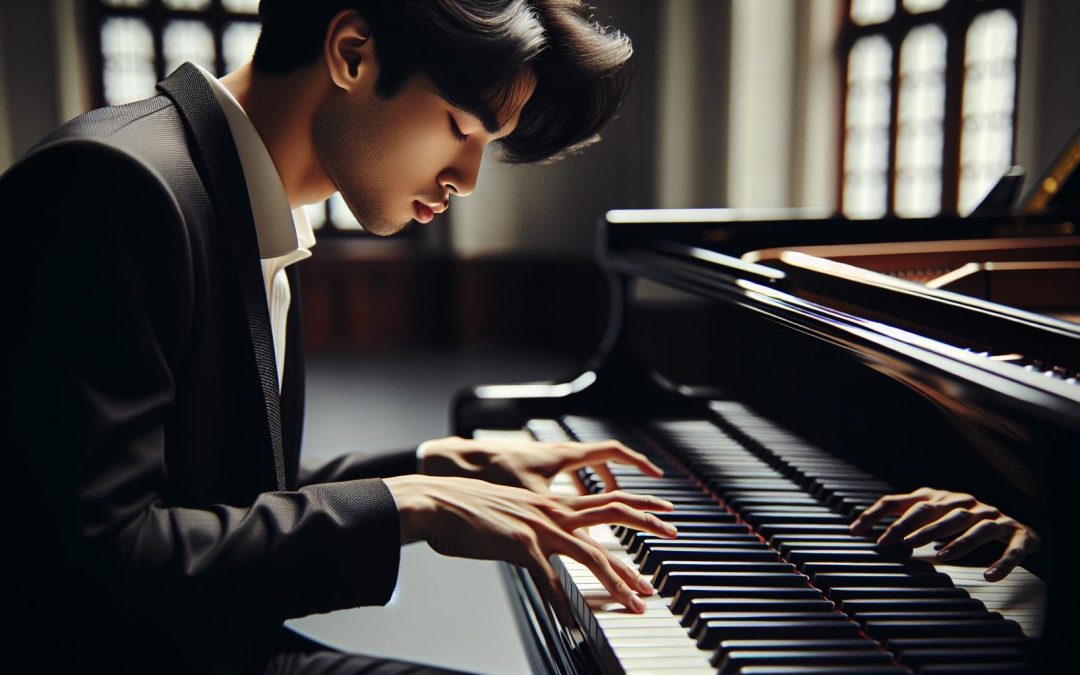Warming up before diving into a piano practice session is like stretching before a run; it's essential for performance and helps prevent injury. Yet, many pianists skip this crucial step, eager to get to the heart of their music. But taking the time to warm up can transform their practice, making it more effective and enjoyable.
From gentle finger exercises to creative improvisation, the best warm-ups engage both the mind and the body, preparing them for the demands of playing. They're not just about loosening up the fingers; they're about setting the stage for a successful practice session. Let's explore some of the top ways to warm up that can help pianists of all levels unlock their full potential.
Importance of Warming Up for Piano Practice
Warming up before piano practice is like stretching before a run; it's essential for both performance enhancement and injury prevention. Many pianists, eager to delve into their pieces, often overlook this crucial step. However, those who invest time in warm-up exercises find their practice sessions more effective and enjoyable. A proper warm-up engages both the mind and the body, preparing pianists for the demands of playing. This preparation can drastically improve one’s ability to learn and perform music.
Warm-up exercises vary but share common goals: to improve flexibility, increase blood flow to the hands, and sharpen mental focus. Finger exercises are a staple in piano warm-ups, designed to build strength and dexterity. Scales and arpeggios serve a dual purpose, enhancing technical skills while also getting the fingers moving. For mental preparation, some pianists benefit from improvisation or playing simple pieces by ear, nurturing creativity and musical intuition.
The benefits of a comprehensive warm-up routine are evident. Pianists report improved agility and reduced risk of strain or injury. Moreover, engaging in mindful practice from the start can set a positive tone for the entire session. It’s a time for pianists to connect with their instrument, review their goals, and mentally prepare for the challenging work ahead.
Research supports the practice of warming up. In a study examining professional musicians, those who followed a structured warm-up routine reported fewer performance-related injuries and higher levels of satisfaction with their playing. Here's a quick glance at some of these findings:
| Benefit | Percentage of Musicians Reporting Improvement |
|---|---|
| Reduced Risk of Injury | 75% |
| Improved Technical Agility | 85% |
| Enhanced Musical Focus | 90% |
It’s clear that the few minutes spent warming up can yield significant returns in both the short and long term. Players become more attuned to their instrument, achieve a faster response from their fingers, and most importantly, enjoy a safer and more fulfilling practice session.
Gentle Finger Exercises

Warming up by engaging in gentle finger exercises is essential for pianists of all levels. It not only prepares the fingers for the physical demands of playing but also focuses the mind, helping to establish a connection between the pianist and their instrument. These exercises often begin with simple movements that gradually increase in complexity, allowing the fingers to slowly awaken to their full range of motion.
One effective method to start is the "Five-Finger Scale". This involves playing each finger in succession on consecutive keys, starting with the thumb (1) on C and moving up to the pinky (5) on G, then back down. It's crucial to keep the movements slow and deliberate, focusing on even pressure and sound from each finger. This exercise can be varied by changing the dynamics (playing louder or softer) or the tempo (speed), which further enhances finger strength and control.
Another beneficial exercise is finger independence drills. These aim to improve the control and independence of each finger through isolated movements. A simple version requires pressing down all fingers on adjacent keys and then lifting each finger individually, while keeping the others static. This not only challenges the fingers but also improves coordination.
Hanon exercises are also highly recommended for pianists looking to warm up effectively. Comprised of 60 exercises, Hanon’s "The Virtuoso Pianist" starts with relatively simple patterns that progressively incorporate more complex figures and finger stretches. Even the first few exercises of the collection are excellent for warming up, as they encompass a wide range of finger movements and patterns that simulate many of the technical challenges found in more complex pieces.
Incorporating gentle finger exercises into one's routine ensures that the fingers remain agile and responsive. Here's a brief table summarizing the benefits of these exercises:
| Exercise Type | Benefits |
|---|---|
| Five-Finger Scale | Improves finger strength and control. |
| Finger Independence Drills | Enhances coordination and independence. |
| Hanon Exercises | Increases agility and technical precision. |
It’s important for musicians to approach these exercises as a meditative practice, paying attention to the sensations in their fingers and hands. Feeling the weight of each finger pressing into the keyboard can connect the player more deeply with their instrument, transforming routine practice into an engaging, mindful experience.
Scales and Arpeggios

Mastering the Basics
Scales and arpeggios are the bread and butter of a pianist's warm-up routine. They’re not just exercises for beginners but are essential for musicians at all levels to maintain and improve their technical skills. Playing scales and arpeggios helps pianists familiarize themselves with different keys, sharpen their finger agility, and develop a keen sense of pitch and tone.
Incorporating Variety
Practicing scales doesn’t have to be monotonous. Musicians can add variety by varying the tempo, articulation, and dynamics of their scales and arpeggios. Starting slow allows for focus on finger movement and accuracy, then gradually increasing the speed to build dexterity and endurance. Alternating between legato and staccato articulations not only keeps the mind engaged but also enhances control over finger movements.
Focus on Finger Positioning
Proper finger positioning is crucial when playing scales and arpeggios. It ensures that the pianist can move smoothly and quickly across the keys without strain or discomfort. Incorporating thumb under and crossover techniques smoothly is a skill that improves with consistent practice and attention to detail.
| Key Aspects of Scales and Arpeggios Practice | Tips |
|---|---|
| Repetition | Consistent daily practice is key to mastering scales and arpeggios. |
| Metronome Use | Using a metronome ensures timing accuracy and helps with speed development. |
| Finger Strength | Scales and arpeggios build finger strength, preparing hands for more complex pieces. |
| Musicality | Focusing on musicality, even in technical exercises, enhances expressiveness. |
Applying Scales and Arpeggios Creatively
To further benefit from scales and arpeggios, pianists should consider integrating them into their creative practices. This could mean improvising around a set of arpeggios or composing a short piece based on a scale pattern. Such activities not only reinforce technical skills but also foster musical creativity and expression.
Creative Improvisation

When talking about warming up for piano practice, one cannot overlook the power and significance of creative improvisation. This approach isn't just about playing random notes but rather it's about weaving those scales and arpeggios into more expressive and imaginative musical phrases. Musicians often find that this aspect of play not only warms up their fingers but also their creative minds, making it an essential part of their daily routine.
Creative improvisation allows pianists to explore the full range of the keyboard, experimenting with different musical ideas without the strict confines of sheet music. This can mean creating melodies over simple chord progressions one has mastered or improvising over the scale patterns they've been practicing. The key here is freedom - to play without fear of mistakes, as each 'mistake' could lead to a new musical idea.
To make the most out of creative improvisation, they should:
- Start with a simple chord progression or scale and begin improvising melodies on top.
- Experiment with varying rhythms and dynamics to add expression to their improvisations.
- Use a metronome to keep time, gradually increasing the pace to challenge their finger speed and accuracy.
- Record their improvisations to identify areas for improvement and to capture moments of creativity that could be developed into more structured pieces.
Here are some benefits of including creative improvisation in piano warm-ups:
| Benefit | Description |
|---|---|
| Enhances Musicality | Improvisation helps in understanding musical structure and form, fostering a deeper connection with music. |
| Improves Pitch Awareness and Hearing | Regular improvisation practices develop the ability to identify pitches and harmonies, enhancing ear training. |
| Builds Finger Agility and Strength | Navigating through different keys and tempo variations during improvisation aids in building dexterity and finger strength. |
| Fosters Creative Expression | Free-form playing encourages the exploration of personal musical style and expression, vital for artistic development. |
Incorporating improvisation not only serves as an effective warm-up but also bridges the gap between technical proficiency and expressive musicality. By engaging in this practice, they can discover new sound landscapes, build upon their musical intuition, and advance their performance skills in unforeseen and exciting ways.
Mind-Body Connection in Warm-ups

The intertwining of the mind and body is undeniable, especially in the realm of music. When pianists embark on their warm-up routines, they're not just preparing their fingers for the intricate dances across the keyboard; they're also setting the stage for a harmonious partnership between their physical actions and mental intentions. This dual focus on the mental and physical aspects is paramount for achieving a state of flow, where every note played is both intentional and instinctual.
Fostering this mind-body connection can start with something as simple as mindfulness exercises. Before touching the piano keys, musicians might take a few moments to sit still, close their eyes, and breathe deeply. This practice helps in centering their thoughts and aligning their mental focus with their physical presence in the space. It’s an acknowledgment that the art of making music is a holistic endeavor that demands the full engagement of both the body and the mind.
Incorporating visualization techniques is another powerful strategy. Pianists often visualize themselves playing their pieces flawlessly, imagining their fingers moving smoothly and confidently over the keys. This mental rehearsal can significantly enhance motor skills, as the brain starts to map out the required physical processes before they even happen. It’s a testament to the adage that playing the piano is as much a mental game as it is a physical one.
Furthermore, integrating gentle physical stretches into the warm-up routine can help bridge the gap between mental preparation and physical execution. Stretching not only prepares the muscles for the physical demands of playing but also signals to the mind that it’s time to focus, creating a seamless transition into practice. These stretches aren’t just for the fingers and hands but also for the shoulders, back, and even legs, as maintaining a balanced posture at the piano is essential for both comfort and performance.
The marriage of mental visualization and physical practice during warm-ups can have profound effects on a pianist's overall performance. It’s an approach that honors the complexity of piano playing, recognizing that mastery extends beyond mere technical skill to include emotional expression, musical interpretation, and personal connection to the piece. Through the mind-body connection in warm-ups, pianists not only prime themselves for the technical challenges ahead but also for the deeper, more expressive aspects of their practice.
Conclusion
Warming up for piano practice goes beyond just getting the fingers moving. It's about creating harmony between the mind and body, setting the stage for a performance that's as emotionally rich as it is technically sound. By incorporating mindfulness, visualization, and targeted stretches, pianists can elevate their practice sessions. They'll not only prime their muscles but also tune their hearts and minds to the music they're about to bring to life. So next time before hitting those keys, remember it's not just about the notes but the journey they take you on.
Harlan Kilstein began playing piano during covid with no piano background at all. He taught himself how to play learning what to do and what not to do.
Today he's an advanced intermediate player and can help you grow in your skills because he learned all this on his own.








